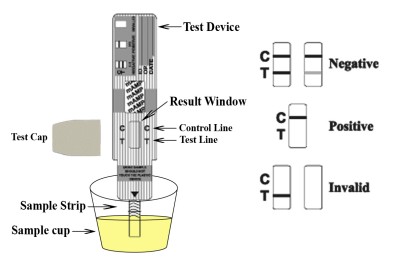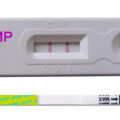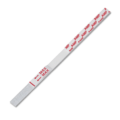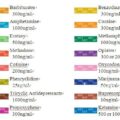Amphetamine is a powerful stimulator of the central nervous system that is used in the treatment of attention deficit hyperactivity disorder, narcolepsy, and obesity. Stimulants such as amphetamine (Adderall) and methylphenidate (Ritalin and Concerta) are used to treat attention deficit hyperactivity disorder (ADHD). Used under prescription, stimulants can be safe and effective.
Amphetamine sulphate, or speed, is also used for recreational and non-medical purposes. It can lead to euphoria, and it suppresses the appetite, which can lead to weight loss. Used outside the medical context, stimulants can have severe adverse effects.
Amphetamine was first synthesized by a Romanian chemist named Lazar Edeleanu (a.k.a. Edeleano) at the University of Berlin in 1887, but was not used clinically until Gordon A. Alles re-synthesized the drug in the 1920s for use in medical settings to treat asthma, hayfever, and colds. In 1932, Smith, Kline, and French Laboratories marketed the first amphetamine product, an amphetamine-based inhaler (trade name, Benzedrine) to treat nasal congestion. During the remaining 1930s, amphetamines were promoted by U.S. pharmaceutical companies as treatments for ailments such as rhinitis and asthma.
Methamphetamine (MA), a variant of amphetamine, was first synthesized in Japan in 1893 by Nagayoshi Nagai from the precursor chemical ephedrine. MA was not widely used until World War II (1940s), at which time German, English, American, and Japanese governments began giving their military personnel the drug to enhance endurance and alertness and ward off fatigue. (Note: Even today, amphetamines are sometimes used by the U.S. military. In 2002, U.S. pilots in Afghanistan killed and wounded Canadian soldiers in “friendly fire.” The defending lawyers argued that the pilots’ use of amphetamines, which is sanctioned by the Air Force, may have affected the pilots’ judgment.
According to WHO, Amphetamine-type stimulants (ATS), there has been a pronounced increase in the production and use of ATS worldwide. Over the past decade, abuse of amphetamine-type stimulants (ATS) has infiltrated its way into the mainstream culture in certain countries. Younger people in particular seem to possess a skewed sense of safety about the substances believing rather erroneously that the substances are safe and benign.
Abusers of “speed,” “ice,” or other amphetamines might take note: Their outsides might look fine, but their cardiovascular systems show greater aging than the arteries of those smoking tobacco or using the heroin substitute methadone, according to a new study.
The 2015 National Survey on Drug Use and Health (NSDUH) reports that about 4.8 million people in the US abused prescription amphetamine medications that year, equivalent to about 1.8 percent of the population that is 12 and older. The National Institute on Drug Abuse, on the other hand, reports that about 1.2 million people use methamphetamine; this is about 0.4 percent of the population.
How To Do AN Amphetamine (AMP) Drug Test At Home
When it comes to drug testing, again there are estimates as to how long certain stimulants will stay in the system of the individual, but these aren’t exact. With amphetamines, it’s estimated they’ll show up in a urine test for anywhere from one to three days after being used and for around 12 hours in a blood test. Cocaine will usually show up for around three days in a urine test and for one to two days in a blood test. Methamphetamine can show up in a urine test for anywhere from three to six days and in a blood test for 24 to 72 hours after it’s used. In a hair test, detection windows can be up to 90 days for any kind of stimulant use.
To ensure you achieve fast, accurate results, each drug test amphetamines kit comes with easy, step-by-step instructions, as well as guidance for reading and understanding your test result.
Before You Test
- Read all instructions included with your kit.
- Have a watch, clock, or timer available.
- Check the expiration date on the box. Do not use if product has expired.
Step 1 – Take the Test: When you are ready to test, remove the Test Lid from the sealed foil pouch and fill the Cup with urine to at least the minimum urine level line.
Step 2 – Activate Test: Depending on the brand insert the test strip into the sample but ensure it does not go beyond the maximum level or drop the appropriate number of urine drops into the sample area of the cassette if you are using the cassette like testing kit.
Step 3 – Read Your Results: You can read your results after 3-5 minutes depending on the brand, but do not wait longer than 10 minutes except the instructions say so.
A red or pink colored line must appear next to the word Control or (C) to indicate the test is valid or has worked correctly
Cut-off : 1 000 ng/ml
This test will be positive if the sample tested contains at least 1 000 nanograms of amphetamines per milliliter of urine, or negative if the sample contains less or not at all.
Amphetamine (AMP) Drug Test Cut-off
| compound | cut-off (ng/ml) |
| D-Amphetamine | 1 000 |
| D-Methamphetamine | >20 000 |
| L-Amphetamine | >50 000 |
| L-Methamphetamine | >20 000 |
| 3,4-Methylenedioxy-methamphetamine (MDMA) | >20 000 |
| 3,4-Methylenedioxyamphetamine (MDA) | 2 400 |
| 3,4-Methylenedioxyethylamphetamine (MDEA) | >100 000 |
| Paramethoxyamphetamine (PMA) | 1 000 |
SEE: How To Do A Buprenorphine (BUP) Drug Test







